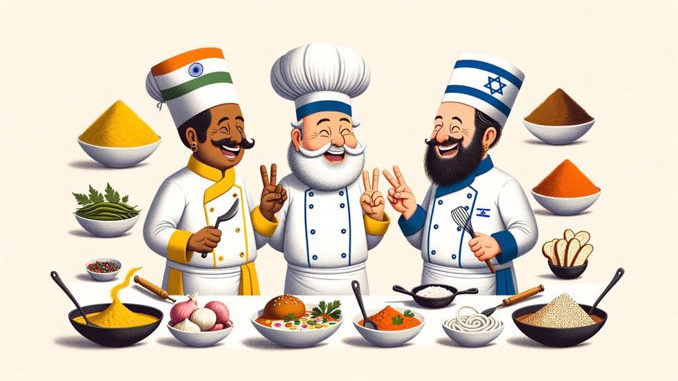
Preserving the Heritage of India’s Disappearing Jewish Communities: Exploring the Culinary Traditions and Architectural Legacy
Introduction: India is home to five Jewish communities that are on the verge of disappearing. Despite being separated by geography and language, these communities share two things in common: praying in Hebrew and food. The purpose of this article is to examine the architectural legacy and culinary traditions of these diminishing communities and to understand the factors contributing to their decline.
Architectural Legacy: The Magen David Synagogue and Neveh Shalom Synagogue are located in Barabazar, a wholesale market in Kolkata. These synagogues were once part of the Baghdadi Jewish community, which is now dwindling. Magen David Synagogue is a striking example of Italian Renaissance architecture, but it is deserted on most days, and hardly any religious activity takes place. The Archaeological Survey of India renovated these synagogues in 2017, and they are now tourist destinations.
Culinary Traditions: Jews have been living in India for approximately 2,000 years. Waves of Jewish immigrants continued to come to India until two centuries ago, fleeing persecution and searching for better livelihoods. The Bene Israel Jewish community is the largest group and is spread over Mumbai and Pune in Maharashtra and parts of Gujarat, while the Malabar or Cochin Jews can be found in Kerala. The Baghdadi Jews settled in Kolkata, the Bene Ephraim Jews near Machilipatnam, Andhra Pradesh, and the Bnei Menashe Jews in Manipur and Mizoram. By 1940, an estimated 50,000 Jews lived in India. However, widespread immigration to Israel in the 1950s slowly eroded these numbers, and now fewer than 5,000 remain.
Each Jewish community in India is unique, with its distinct language and culinary influences. Although their food has regional influences, their staple diet is fish with scales and rice, and they end their meal with sweets made with coconut milk or fruit to avoid mixing dairy with meat. Because kosher meat is not always available, many follow a vegetarian diet.
The Bene Israel Jewish community has adapted local culinary influences, so much so that it uses chapatis instead of challah and homemade grape juice or sherbet instead of kosher wine for the Shabbat ceremony. Each community adheres to dietary laws that are fundamental to the Jewish religion, which includes no mixing of dairy and meat, no pork, no shellfish, and no fish without scales.
Factors Contributing to the Decline: The decline of these Jewish communities in India is due to several factors, including immigration to Israel, assimilation into local communities, and interfaith marriages. The immigration to Israel during the 1950s drastically reduced their numbers. These communities amalgamated into the local communities and adapted to the local language and cuisine, leading to the decline of their distinct Jewish identity. Interfaith marriages also pose a threat to their religious identity, and their unique culinary traditions and dietary laws are at risk of being lost.
Conclusion: Preserving the heritage of these diminishing Jewish communities in India is crucial. The architectural legacy and culinary traditions of these communities provide a unique insight into the country’s diverse culture and history. Although these communities are small, their contributions to Indian society are significant. By recognizing and preserving their heritage, we can ensure that their legacy lives on for future generations.




